Archive for the ‘photography’ Category
Snapshots in Time: Shaw, LeDroit Park, Bloomingdale
Neighborhoods are ever-evolving, and even in a few years’ time you can track how your city is changing. Here are a few photos from this morning around Shaw, LeDroit Park, and Bloomingdale, neighborhoods that are experiencing the growth of new large-scale development alongside smaller residential projects, restaurants, and more.

“Progression Place” is a mixed-use development that is currently going up next to the Shaw-Howard Metro station at 7th and S Street NW. It’ll consist of the United Negro College Fund’s national offices, additional office spaces, (probably higher-end) residences, and retail.
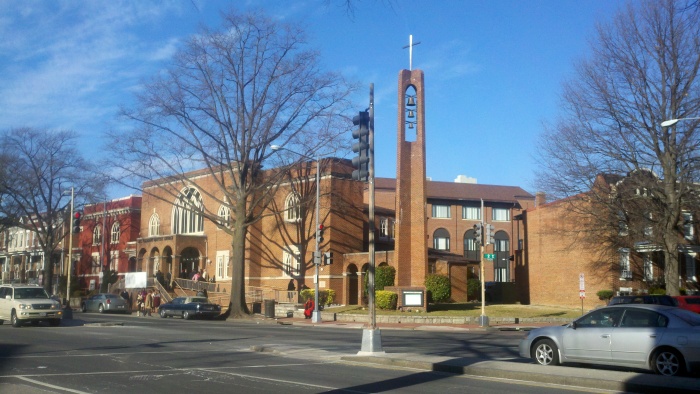
Pictured above is the Mt. Pleasant Baptist Church, which despite its name is located at 2nd and Rhode Island Ave NW in the LeDroit Park neighborhood.
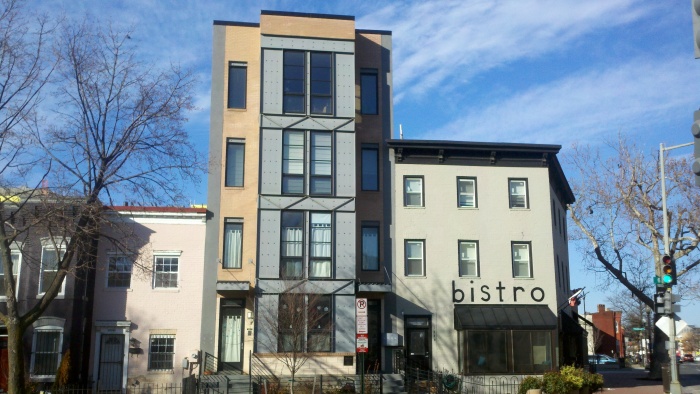
Bistro Bohem is a Czech restaurant in Shaw, close to the edge of the U Street corridor, that opened in March 2012. I haven’t tried it, but they serve pierogies, brats, goulash, and unique cocktails (including one with absinthe). Next door is a condominium.
Still don’t have a proper camera to replace the one that was stolen, so these are just snapshots from my phone. I probably will wait to buy another DSLR, but if anyone has recommendations for a decent point-and-shoot camera that is also lightweight, I’d love to hear them!
Lake Myvatn and Hverir steam vents
To continue going through our Iceland trip, I wanted to write a little bit about the area surrounding Lake Mývatn. Myvatn is a common vacation spot for Icelanders and tourists, with mixed-use paths running the perimeter of the lake, opportunities to birdwatch in the surrounding wetlands, and a beautiful geothermal bath. The lake was created by volcanic activity, which continues to shape and re-shape the region.

The drive to Lake Myvatn by way of Route 1 was preceded by sweeping changes of landscape throughout the morning. The immense looming glacier Vatnajökull, miles (or kilometers) of open ocean raging against the shoreline, black sand beaches, and barren volcanic deserts carried us along the coast and back towards middle Iceland. The last couple of hours driving towards Myvatn from the east was truly a barren land – no people, a few wandering sheep, sparse vegetation, and patches of snow atop the seemingly endless stretches of mossy lava.
More photos, so the post continues after the cut.
Beautiful Travel Photography from International Photographer
I recently stumbled upon this gorgeous set of photos from International Photographer: Icelandic Photographic Roadtrip
Click through the image or link above to see the photo sets from a 23-day trip through Iceland. I would agree with his note:
Take your time! There are lots of photographs to see, but each is the fruit of painstaking work, and there are many details you’ll miss if you browse too fast. So go gently, perhaps viewing just a few days at a time, if necessary. That way you’ll keep your gaze fresh!
I found his website while looking for travelogues from people who’ve been to Iceland, just searching for ideas of how to make our upcoming trip especially memorable. From this account, I got the idea to tent camp during the nights we’re driving around the Ring Road. Being late September, we’ll have to dress warmly – in many layers – and be prepared for a lot of wind and rain. At the same time, it appears that campsites are widespread and well-maintained, so I’m excited for an adventure with a few comforts (like hot water!).
The Santas of Washington, DC
Photos from Santarchy DC 2011! This is an annual December festival/invasion of hundreds dressed in their Santa outfits and variations on holiday costumes.

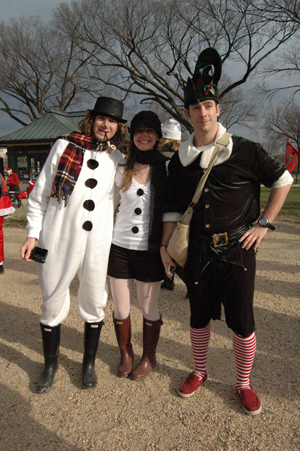
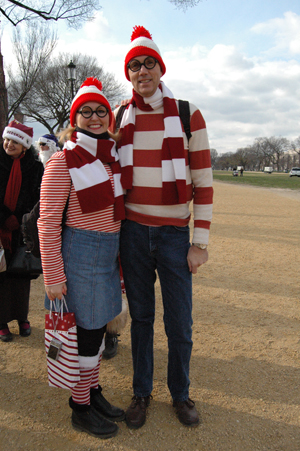
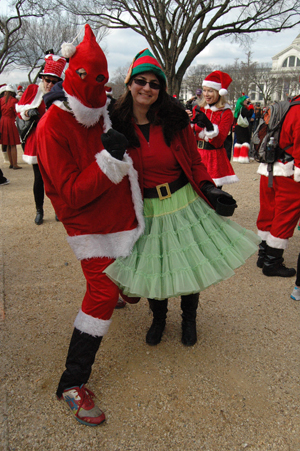
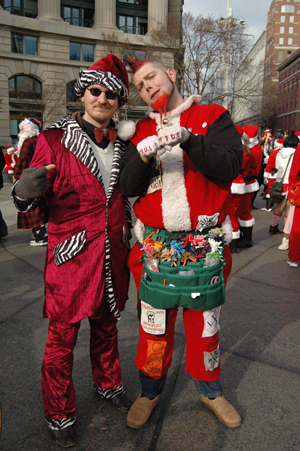

Digital Preservation of Historic Places
Preserving the world’s historic places is no mean feat. It is inevitable that buildings will fall, statues will be destroyed, and the structures of entire civilizations past will be mere memories. Buildings will erode, be reimagined and rebuilt in a new form. However, technologies such as digital photography are playing an increasing role in cataloguing and recording the world’s historically significant sites. With the advent of new methods of digitizing these places, our histories are better shared and the fabric of our cultures are better recorded.
Ben Kacyra is the inventor of a 3D scanning system that has been used to visualize historic sites. The projects of the CyArk archive use this system to collect millions of data points for each heritage site, capturing the sites in point clouds that together form a precise 3D model. You can browse the public online archive to see a point cloud, a 3D model, a Google Earth representation, and various photos of each site that has been digitally preserved so far. Also see his inspiring TED talk, “Ancient Wonders Captured in 3D.”
Our heritage is much more than our collective memory, it is our collective treasure. We owe it to our children, our grandchildren, and the generations we will never meet to keep it safe and pass it along.

Close to home: Google Street View screen capture of the Wonder Bread factory in Shaw.
In a way, the immense efforts of the Google Street View team are also a piecemeal digital cultural preservation of our highways and byways (as well as the life lived around these paths). Camera-mounted vehicles have driven across more than 30 countries, documenting the view from the streets. Small moments are taken out of time.

At an intersection in downtown São Paulo
Those images above are just two of my finds this evening, but especially interesting Google Street View finds can be found at Jon Rafman’s project 9-eyes.com. There you’ll see a wild slice of life as caught by these roaming photo cars: passersby waving, police officer pat-downs, caribou traveling down the highway, chaotic urban scenes and, every once in awhile, bits of serene bliss.
Korea Marginalia
A couple more observations I noted on my recent trip to South Korea:
Catch a cab at a cab stand. I saw cab stands (similar to bus stops, sometimes with a shelter covering them) along the busier streets in Seoul. Cabs will come by and pick up any passengers waiting at the stop, or even wait in a line of cabs in popular areas near train stations. I’ve seen cab stands at big transit hubs in the States like Union Station in DC, but I spotted more of them in Korea in a few weeks than I have in all my time in U.S. cities.

Stairs and mountains and… moving walkways. Korea is, more so than not, mountainous. It makes for great hiking. This also means navigating the subway stations involves lots of stair-climbing. And in some of the transfer stations, the different subway lines are so far apart that there are moving walkways to help you get to your destination.
Hotel vs. hostel. We stayed in a hotel in Daegu, but it was worse in every way than any of the hostels we stayed in during our trip. It was a really old building that seemed like it hadn’t been updated since at least the 60s, the shower would only give you hot water for about a minute at a time, and it was completely empty. I think we were the only ones staying on the entire floor, and possibly in the entire hotel. To be fair, Daegu’s not a city that draws in tourists, which is also the reason it doesn’t have any hostels. When we could, we stayed in hostels – they’re cheaper and much more social.

Kimchi! If you’re a fan of spicy food, the food in Korea is so, so good. Kimchi, a fermented Korean side dish with lots of red pepper, is the accompaniment to any proper meal in Korea and essentially the national food. Koreans take a lot of pride in their kimchi, often touting its health benefits and cooking with it in a huge variety of ways.
Seersucker Social 2011 Photos
Following are a few photos from yesterday’s Seersucker Social hosted by Dandies & Quaintrelles. The temperature was ideal for a seersucker-clad bike ride around Washington DC and up to the Hillwood Estate for a lawn party complete with crochet, badminton, gin cocktails, and a live band.
Please leave a link in the comments if you have photos from the event!
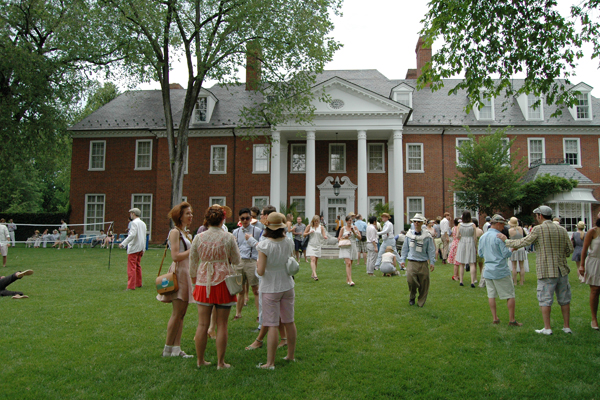
Everyday Lessons Learned: April 2011, Week 4
24: Radiolab – one of my favorite radio shows with a focus on making science-heavy topics light enough for the general public to understand – is also very interesting for its production techniques. Radiolab has a unique sound design that layers and repeats clips of speech, strange noises, and timely pauses with the hosts’ commentary on topics ranging from overlooked day-to-day phenomena to more theoretical heights of philosophy. Speaking about the show’s sound design, Jad Abumrad is quoted in an interview: “The sounds should create a sense of subterranean movement. You know, like you’re hearing this surface narrative, but there’s some kind of turbulence in the depths deep below. That’s something that music can create, so I work really hard to create a bed of music that feels bottomless, but at the same time isn’t intrusive and manipulative.”
If you haven’t heard Radiolab yet, try this episode from March called “Help!” The part about the Russian ‘torpedo’ pill will make you cringe and say to yourself, “No way… really?” Questions aren’t always answered. But they’re certainly surfaced.
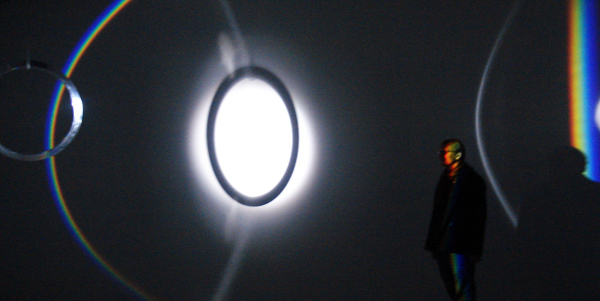
25: Ever wondered about the history of moving buildings? A brief history here.
26: The U.S. military’s been working with mobile app developers to find ways of implementing machine translation in situations where soldiers don’t have access to a live interpretors. Infantry units, for example, generally don’t have a human translator to help them. In PRI’s The World, a few of the demonstrated apps allowed a person to speak a phrase into the device and have it repeated back to them in the desired language. Some even have the ability to demonstrate proper body language, such as a hand gesture that may accompany a spoken phrase.
27: Rio Public Safety Secretary José Mariano Beltrame is considered Brazil’s top cop. Under his direction, the police force has managed to establish calm in the most crime-ridden of Rio de Janeiro’s many favelas (slums). A full 20% of Rio’s 9 million residents is housed in favelas; the largest, Rocinha, alone houses about a quarter million people. Beltrame’s approach to “pacifying” the favelas is highly resource-intensive – in one of the pacified favelas, the police-to-resident ratio is 1 officer for every 40 citizens – but effective:
“In four years under Beltrame’s control, police have “pacified” 14 slums, including Borel, the giant Complexo do Alemão, and the City of God—the flatland favela that inspired the eponymous drugs-and-thugs film. Dons of three competing crime factions are either in jail or dead. Nearly 1,000 rogue cops, including two former police chiefs, have been cashiered.” (Newsweek)
 28: Street artist Shepard Fairey is probably someone you’ve heard of, at least in passing – he designed the famous Barack Obama ‘Hope’ poster (at left) that was so prominent during the president’s election campaign. He started off with screenprinting, which has shaped his artistic style through necessary simplification of the colors and elements in his posters.
28: Street artist Shepard Fairey is probably someone you’ve heard of, at least in passing – he designed the famous Barack Obama ‘Hope’ poster (at left) that was so prominent during the president’s election campaign. He started off with screenprinting, which has shaped his artistic style through necessary simplification of the colors and elements in his posters.
And Shepard Fairey’s been arrested 14 times, but takes a similarly freewheeling stance on these arrests. Fairey quotes Joe Strummer of The Clash in an interview: “Authority has no inherent wisdom.” (I have a photo of a piece in Philadelphia that definitely looks like Fairey’s style. Can anyone confirm?)
29: In the event of a flood, a colony of fire ants can cling to one another, forming a perfectly round raft that is so tightly woven that it forms air pockets which the ants can use to breathe. And this floating mass of ants can float for up to several weeks at a time.
30: According to my father, this dish is something of a delicacy in Korea: live octopus tentacles cut into pieces which are then dropped into a glass of soju (a clear Korean liquor) and taken as a shot (like a shot of liquor, not like a vaccine shot). The contact of the octopus legs with the soju makes the legs squirm around like crazy, which is what’s intended. I’m an adventurous eater, but I’m not sure I’d want to try it.
NYC: Around Battery Park, and Graffiti
Spent the past weekend in New York City. One of the main reasons we went this weekend was to take in Infinite Variety, the quilt exhibit presented through the American Folk Art Museum. Here are a few factoids I learned in the (almost) two days spent in NYC:
- NYC’s bedrock lies only about 50ft underground, so skyscrapers can be constructed directly on top of the bedrock foundation, which gives these enormous buildings a boost in stability.
- Battery Park City is completely man-made. What’s Battery Park City now used to be part of the Hudson River, but they extended this part of Manhattan using excavated material from the World Trade Center site. Amazing to learn that as recently as 50 years ago, none of what I saw there existed.
- Many of the skyscrapers of the Financial District stretch really high close to the sidewalk and block out a lot of sunlight because they were constructed before the city implemented setback regulations, which state how high the building can be at certain distances from the road. The result is a kind of “stepped” look to the building. (I’m doing a poor job explaining this because I don’t really have the architectural lingo for it… hope my description makes some sense.)
Of course, I also took a few photos to post on the blog:

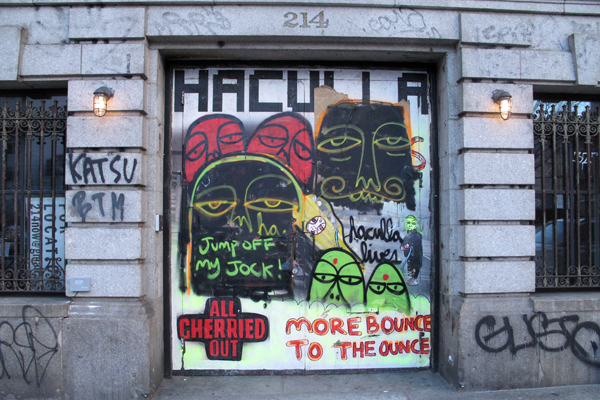
“Hamtdaa: Together” at Artisphere
Last night was the opening of the new Mongolian art and culture exhibit at Artisphere, called Hamtdaa: Together. The show runs through Sunday, May 1, 2011. Hamtdaa features art from Gankhuyag Natsag, including Mongolian Tsam masks and paintings that blend ancient tradition with modern living. The Mongolian community of Arlington is very tight knit, and credits Natsag for his significant role in the revival of the Tsam tradition. Tsam is “a theatrical art performed by skilled dancers representing characters of holy figures, devils, animals, and people. This ancient religious mask dance reflects both Buddhist teachings and older Shamanistic practices.”
The masks are gorgeous. They’re crafted of paper-mâché and decorated with paint, fur, horse hair, and other materials. In total, there are 108 Tsam masks in the cosmology, representing that many different characters. A special thank you goes out to Lena Shrestha, graduate student at Goucher College, for her informative write-up for Hamtdaa, and also to Harold Anderson, folklorist and professor.
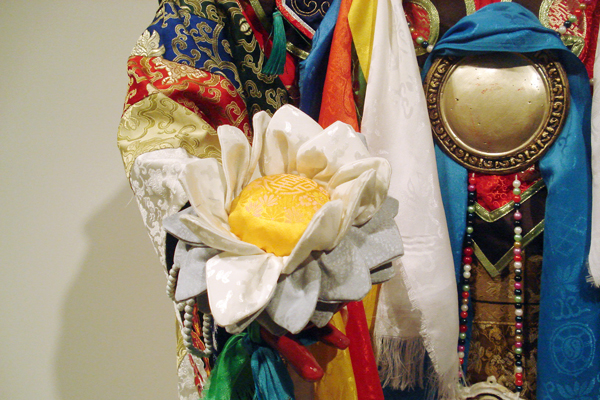
After the cut, photos from the opening reception. The reception also featured Mongolian dances by young members of the local community, who learned the art here in Arlington, Virginia.
